Fluttering around Kuranda
We had hopped on board the Kuranda Scenic Railway train for a 09:30 departure and a bit more than two hours later alighted in the village of Kuranda where one of the first things that demanded my attention was this plant and tree coupling.

Our first stop was the
Australian Butterfly Sanctuary.
Our group has visited several animal sanctuaries on this trip but these were all centered on large animals – mammals, reptiles, birds, and so on. But butterflies? You might reasonably be wondering why butterflies would need a sanctuary and whether Kuranda is an appropriate site for this endeavor. And if you’re not wondering, I suggest you skip ahead (unless you’re using the TTS feature and you can’t skip ahead.)
I’ll start with the second question that’s essentially “Why Kuranda?”. First, let’s take a look at its location.
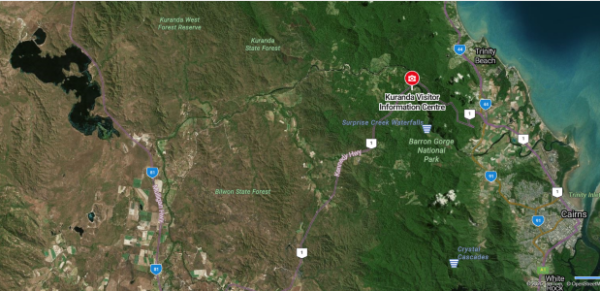
It’s close to Cairns and its population exceeding 170,000 and one that’s a significant tourist hub because of its proximity to the Great Barrier Reef. Although the sanctuary is considerably less famous than its ocean bound companion, the rainforest of which it’s a part isn’t. And certainly if you’ve toted yourself all the way to Far Northern Queensland (FNQ) you’re going to want to do more than spend a day at the GBR. Kuranda is easily accessible by car (about half an hour drive), by the Kuranda Scenic Railway that our group took (two pleasant hours), or the Skyrail Rainforest Cableway that we’ll ride on our descent and it’s a laid-back village with sound tourist infrastructure that add to the experience.
Looking again at its location, you can see that it’s in the Barron Gorge National Park that’s part of the WTQ World Heritage Site. Not only is the tropical climate ideal for the survival and breeding of tropical butterflies, the nearby rainforests provide an easily replicable habitat where the butterflies can thrive. The setting also allows the sanctuary to emphasize conservation and sustainability. Now, let’s step inside Australia’s largest butterfly aviary.
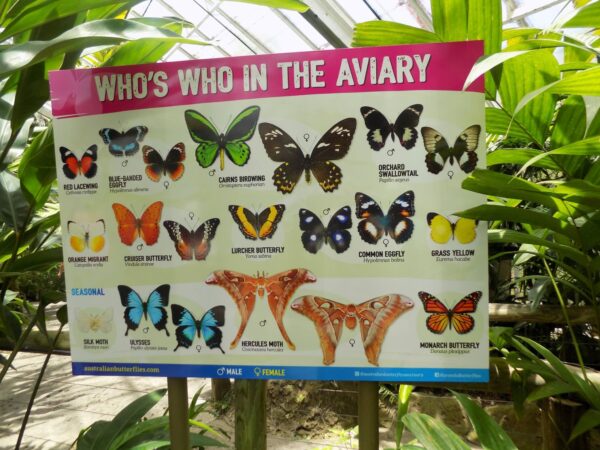
Why Butterfly?
Although it has a breeding program, I don’t think the aviary releases any of its butterflies into the wild. Butterflies generally have a short life span with most adults living just two to four weeks. Some, such as the mourning cloak and usually the last annual generation of migrating monarchs can live as long as nine months.
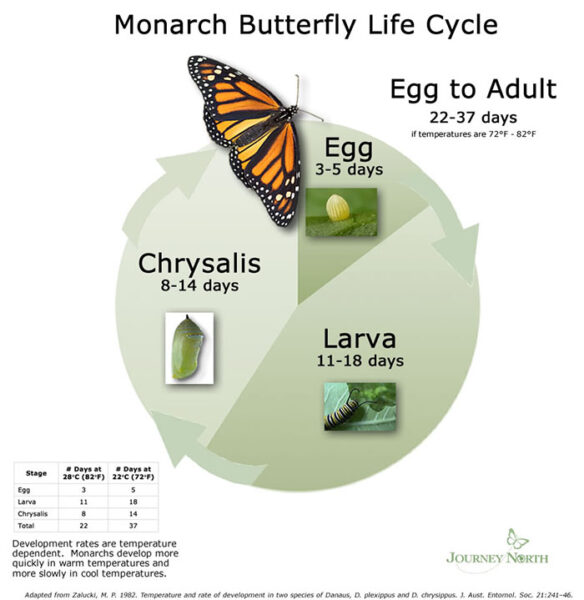
[From U. S. Forest Service]
Because we can be easily absorbed with the beauty of many butterfly species, we may not think about their role in the environment. Like bees and birds, butterflies are valuable pollinators and because different species are attracted to different plants they help maintain a wide range of plant biodiversity. This, in turn, supports other pollinators and animals. At the other end of the telescope, butterflies in all their life stages are a significant and vital food source for many animals, including birds, bats, spiders, and small mammals. This again gives them an important role in maintaining balance within an ecosystem. Despite their short lifespans, they’re sensitive to environmental changes making them indicators of ecosystem health worth watching.
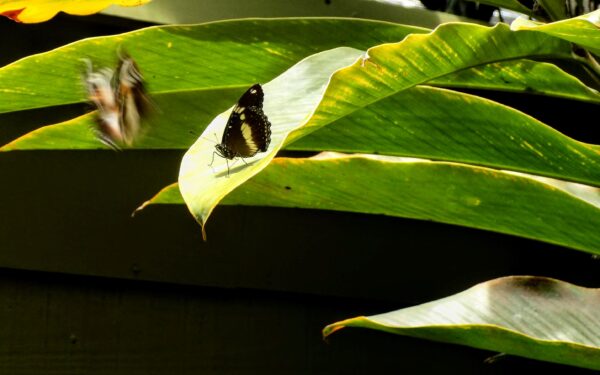
Your moth-er should know
A few final words about butterflies and their very close relatives – moths. The two insects are both among the 180,000 species in the order Lepidoptera. Of these, 145,000 are moths and only 24,000 are butterflies. (The remaining 11,000 are skippers. No Gilligans among them as far as I know.) There are seven differences between moths and butterflies and among the most notable is that butterflies are diurnal while moths are primarily nocturnal. (If we could dress some moths up like the Marx Brothers we might be able to make a movie and call it A Night at the Lepid-optera.) You can read a sign explaining the remaining six differences in the photo album I’ll link below.
The moth in the photo below is among the most fascinating to me.
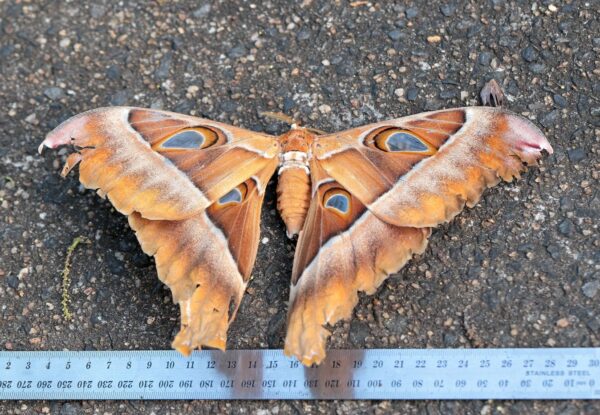
[By Graham Winterflood CC by SA]
This is the Hercules Moth. A native of FNQ, it is the world’s largest moth. It’s particularly fascinating not merely because of its size but because it eats nothing during its adult life. It can’t. It has no mouth. Sadly, I didn’t see one to get a photograph of my own.
Kuranda Wanderings
After our lunch at the curiously named Frogs (where for me the most memorable aspect was being closely watched throughout),
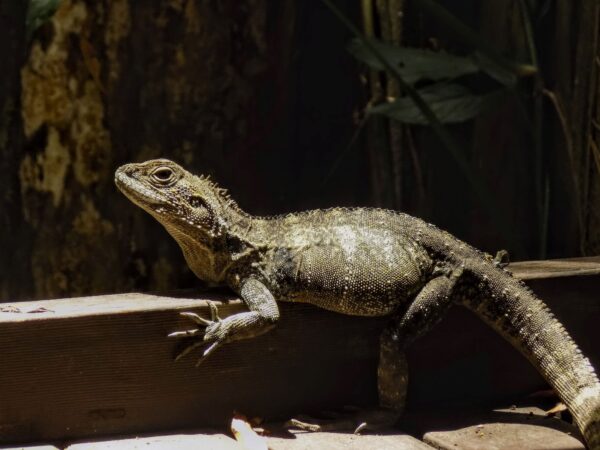
we had a few hours of free time to wander about the village. I didn’t need long to have my fill of browsing past other restaurants and shops so I wandered down to the river where I spotted this sacred kingfisher
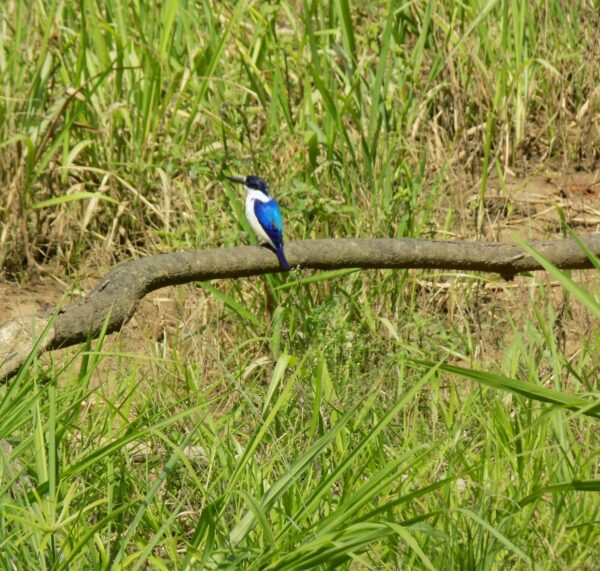
and a pair of cassowaries.
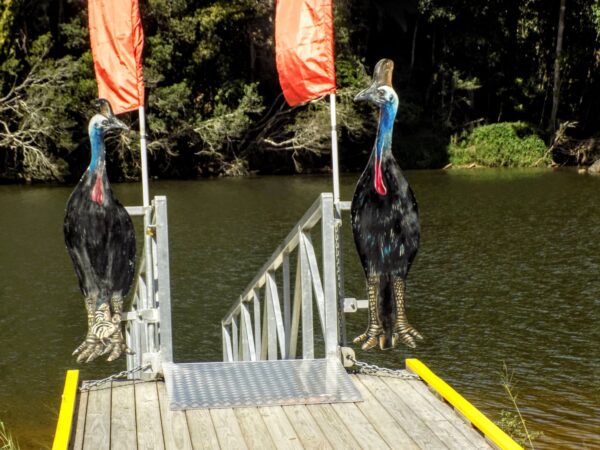
Here’s the promised link to the other photos from the butterfly sanctuary and Kuranda.
Skyrail Rainforest Cableway
(and the tree were looking after Little spirits dancing there)
The day was clear and warm and the views every bit as spectacular as one might expect. However, I’d guess that the cars are zipping along at about 30kph so, unless you’re quick with your camera (or taking video), you overfly the forest and the gorge spending as much time chatting with your cabinmates as you do admiring the forest below. As we approached the Smithfield Terminal about 15 minutes north of Cairns, I took the photo below to provide some idea of the general perspective
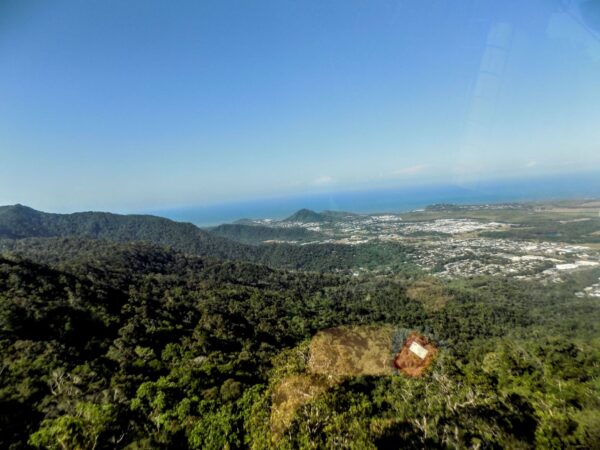
and this video might provide more.
Getting off at the two intermediate stops, on the other hand, changes the experience. Here is where you get to experience the density of the rainforest,
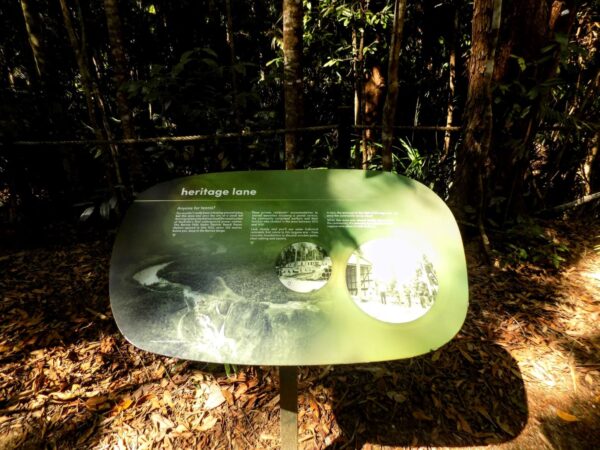
meet some ancient trees like this Agathis Robusta (Queensland Kauri Pine),

get up close and personal with some interesting rainforest denizens,
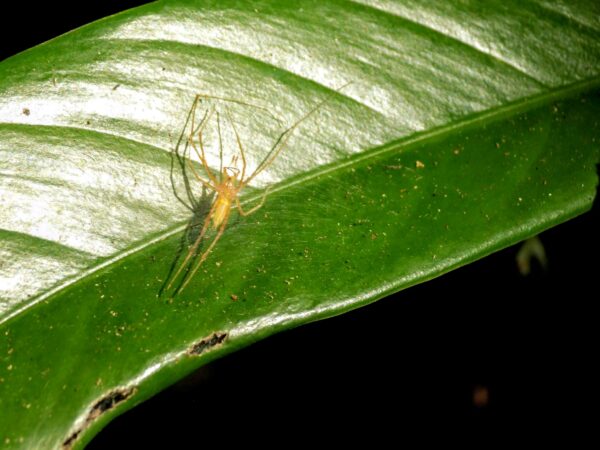
and enjoy some spectacular views of Barron Falls.
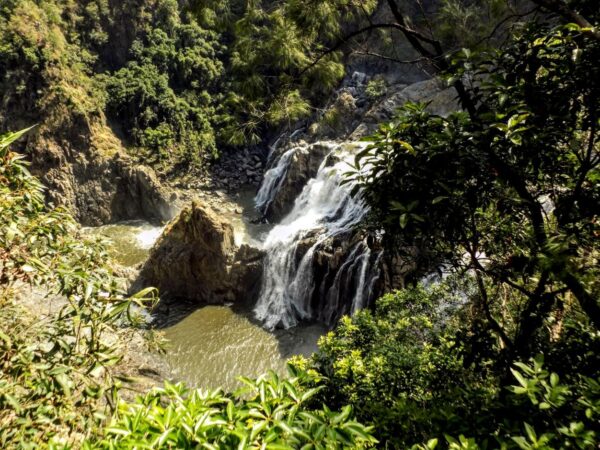
Here are the other pictures and videos from that ride.
A reunion of sorts but minus one
Once back at the hotel we had some free time and I was both excited and a bit anxious about my meeting with E’s mother and father. Our plan was to meet and have or two before I returned to the hotel for dinner. The timing meant I’d miss (with no regrets) what RS calls the MASH (Memories and Shared Highlights) session.
The elder E arrived on time and we hopped in the car and, after a brief stop at the Botanical Garden where they were looking for a particular bird’s nest (that I helped them find!), went to one of their favored spots where we each had a beer. We had a lively conversation as Mom E brought me up to date on daughter E’s life in the decade since we’d seen one another. B, E’s dad, had a commitment but we were having such a pleasant time that we returned to the hotel where Mom and I shared more conversation and beer while S & J, who spotted us in the bar, brough me the dinner I’d pre-ordered. E and I shared it.
The only (and, for me, major) disappointment was that the younger E never joined us by phone or FaceTime. Since I’ve not heard from her since, I have to conclude that she’d simply rather not – and that is very much her prerogative. At evening’s end, the elder E and I connected on WhatsApp, said our goodbyes, and, not wanting to spoil the party, I took my disappointment to bed.
Morning in Cairns and Rydges Sydney Airport
I guess it makes sense that the latest morning start for our group happened on the last day of the trip. I had a bit of an early morning walk. Took a picture or two of some wall art

and a Christmas tree

before heading back to our hotel for the flight to Sydney. My last pictures from Cairns are here.
We spent our last night at the Rydges Sydney Airport Hotel. If you’re ever flying out out of Sydney, this is a brilliant place to stay. The hotel is nice enough but it’s brilliant because it is, as the Qantas website reports,
The ONLY fully serviced hotel within the Sydney Airport precinct, just 181 steps away. Rydges Sydney Airport offers convenient access to both Domestic and International terminals (free of charge Sydney Airport T-bus service between 7:30 am and 7:30pm)…
That’s right. Check out of the hotel, walk across the street, and check-in for the airport while missing all the chaos at the terminal. As I said, brilliant.
In a few hours, I’ll be boarding my Qantas flight to Hobart so, while I’ll be on my own, there’s more Australia to come. But first, since Sydney hosted the Olympics, I’ll detour for five new posts in the Olympic Host Cities section of the site.